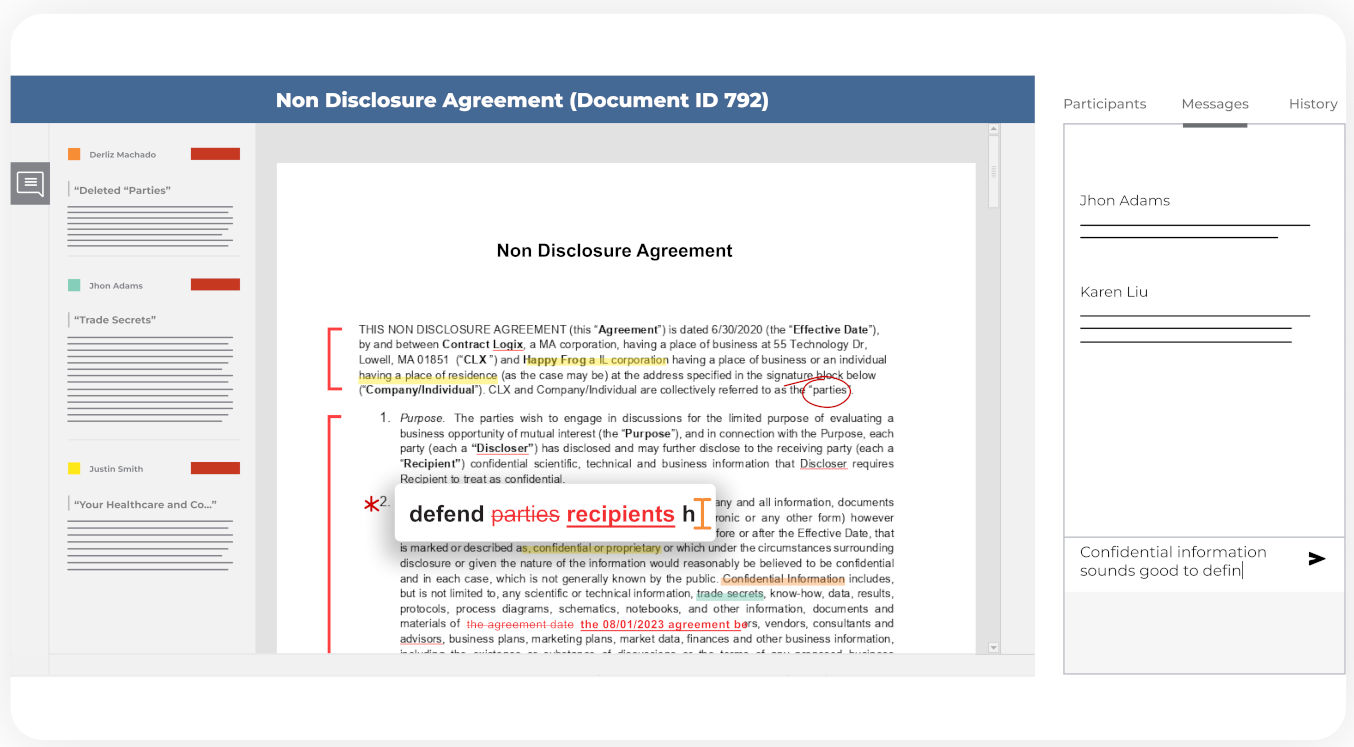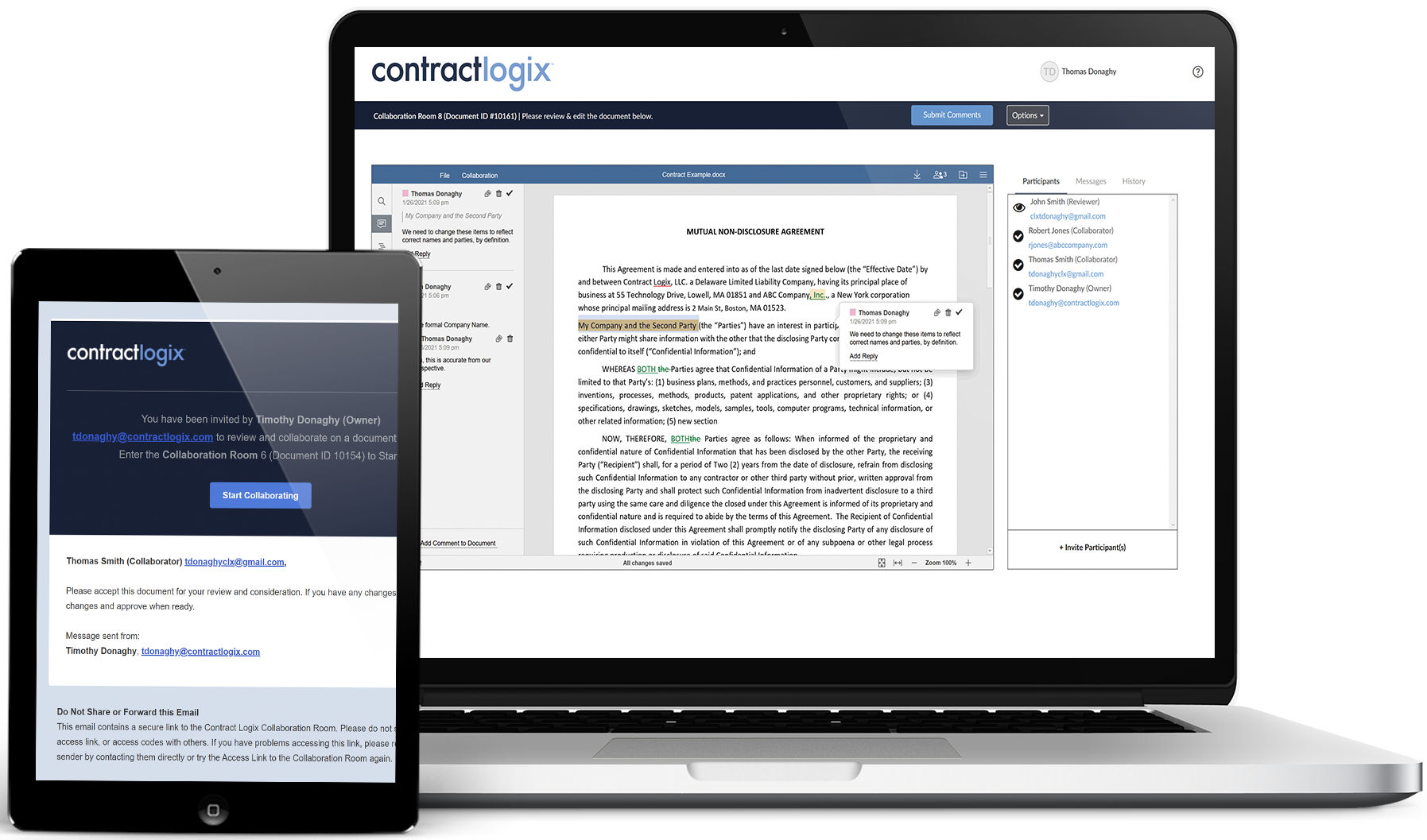Mastering the Art of Contract Redlining: A Comprehensive Guide
June 17th, 2024
Contract redlining, a critical practice in contract management, ensures that every agreement reflects the true intentions of all parties involved. By meticulously tracking changes and revisions, redlining fosters transparency and accountability.
With the advent of advanced technology, the redlining process has become more efficient and collaborative, enabling buyers and sellers to negotiate with confidence. In this guide, we will explore the essential aspects of contract redlining and how you can master this vital skill to enhance your contract management solutions.
Quick Takeaways
- Contract redlining highlights proposed changes to facilitate clear negotiation and review.
- It creates a transparent record of all changes, ensuring all parties agree to the final terms.
- Redlining encourages effective and transparent negotiations by allowing all parties to collaborate.
- Implementing best practices like clear communication, version control, transparency, and consistency streamlines the redlining process and ensures everyone is on the same page.
😉 Bonus: Check out how Medallion Midstream executes contracts 90% faster by digitally transforming their contract management with Contract Logix in this case study.
Understanding Contract Redlining
Contract redlining ensures clarity and precision in agreements. This process involves marking up a contract document to highlight proposed changes, facilitating a clear negotiation and review process between parties.

The significance of contract redlining lies in its ability to create a transparent audit trail of all changes made during the negotiation process. This practice helps maintain a clear record of modifications and also ensures that all parties are aware of and agree to the terms being finalized.
Contract redlining is not just about making changes, but about fostering a collaborative space where all parties can negotiate effectively and transparently.
Best Practices for Contract Redlining
Implementing best practices for contract redlining can streamline the negotiation process, enhance clarity, and ensure all parties are on the same page. Here are some essential practices to follow:
1. Clear Communication
Clear and precise communication is fundamental during the redlining process. According to Deloitte, companies are losing an estimated 8.6% of their earnings a year due to contract value erosion, highlighting the critical need for effective contract management.
Make sure all proposed changes are well-documented and clearly explained. This helps avoid misunderstandings and ensures all parties understand the intent behind each redline.
2. Version Control
Maintaining version control is crucial in contract redlining. Keeping track of every version of the contract helps maintain an audit trail, which is essential for legal and compliance purposes. It ensures all changes are documented and there is a clear record of how the contract has evolved over time.
3. Transparency
Transparency in the redlining process builds trust between all parties involved. By making all changes visible and accessible, stakeholders can see the progression of the contract and understand the rationale behind each redline. This transparency is key to a successful negotiation.
4. Consistency
Consistency in terminology and clauses throughout the contract is vital. Make sure the same terms are used consistently to avoid confusion, misinterpretation, and ultimately risk. Consistent language helps in maintaining the integrity of the contract and ensures all parties have a clear understanding of the terms.
The Role of Technology in Contract Redlining
Technology plays a key role in enhancing the contract redlining process, making it more efficient, collaborative, and transparent. Modern contract management tools streamline the review and negotiation phases, allowing for real-time updates and seamless communication among all stakeholders.
Collaboration Features
Advanced contract management platforms provide robust collaboration features. These tools enable all parties to edit, comment, and track changes in real time.

This functionality ensures everyone involved in the contract negotiation has access to the latest version, reducing the risk of miscommunication and ensuring all feedback is considered promptly.
Real-Time Editing and Commenting
Real-time editing and commenting capabilities allow for instantaneous feedback and revisions. This speeds up the negotiation process, as parties do not have to wait for email exchanges to review changes.
Instant notifications about updates make sure all stakeholders are kept in the loop, promoting a more dynamic and responsive negotiation environment.
E-Signature Capabilities
E-Signature capabilities integrated into contract lifecycle management (CLM) platforms eliminate the need for physical signatures, further accelerating the contract finalization process. E-Signatures provide a secure and legally binding way to sign documents, ensuring both parties can quickly and efficiently finalize agreements.
Version Control and Audit Trails
Technology ensures meticulous version control and audit trails, critical for compliance and legal purposes. Every change made to the contract is logged, providing a comprehensive history of all modifications. This not only helps in maintaining transparency, but also in resolving any disputes that may arise regarding the terms of the contract.
Integration with Existing Workflows
Many modern contract management solutions can integrate with existing business workflows. This integration makes sure the contract review and redlining process does not disrupt other business operations and provides the ability to establish a single source of truth and audit trail for all contract edits and comments.
By integrating contract management within broader business systems, organizations can maintain continuity and efficiency. For example, you can integrate your CLM with your CRM such as Salesforce. In this situation, a salesperson could request or submit a contract as well as track the progress of it in the negotiation process without ever having to leave the application they work in best, the CRM. And the integration between the two applications ensures all the information is consistent, accurate and up-to-date because it is automatically synced between the two.
Compliance and Legal Standards
Ensuring compliance with legal standards is a critical aspect of contract management. Technology aids in maintaining compliance by providing detailed audit trails and ensuring all changes are tracked and documented.
This reduces the risk of unauthorized modifications and helps ensure regulatory requirements.
Master Contract Redlining Today with Contract Logix
Mastering the art of contract redlining is essential for effective contract management. By leveraging best practices and advanced technology, businesses can ensure their agreements are clear, precise, and compliant with internal legal and regulatory standards. Embracing these strategies enhances the contract redlining process and leads to successful negotiations.
Contract Logix’s Collaboration Room streamlines contract redlining by offering a platform for real-time editing and commenting. It enables both the buy-side and sell-side to instantly make and view changes, ensuring transparent and efficient negotiations. The Collaboration Room feature also provides meticulous version control and audit trails, tracking all modifications for compliance. Seamlessly integrating into existing workflows, this tool enhances the overall contract management process.
Explore how Contract Logix can optimize your contract redlining process. Discuss your specific needs with our team or request a personalized demo to see how our platform can enhance your efficiency, transparency, and compliance during negotiations.
Looking for more articles about Contract Management? Check out our previous article “The Role of CLM (Contract Lifecycle Management) in Successful Business Operations“.
Navigate CLM Success With Contract Logix
Download our Data Extraction Product Brief to learn how you can begin to navigate CLM success by automating the hard work using artificial intelligence with one of the best Contract Management Software’s on the market today


